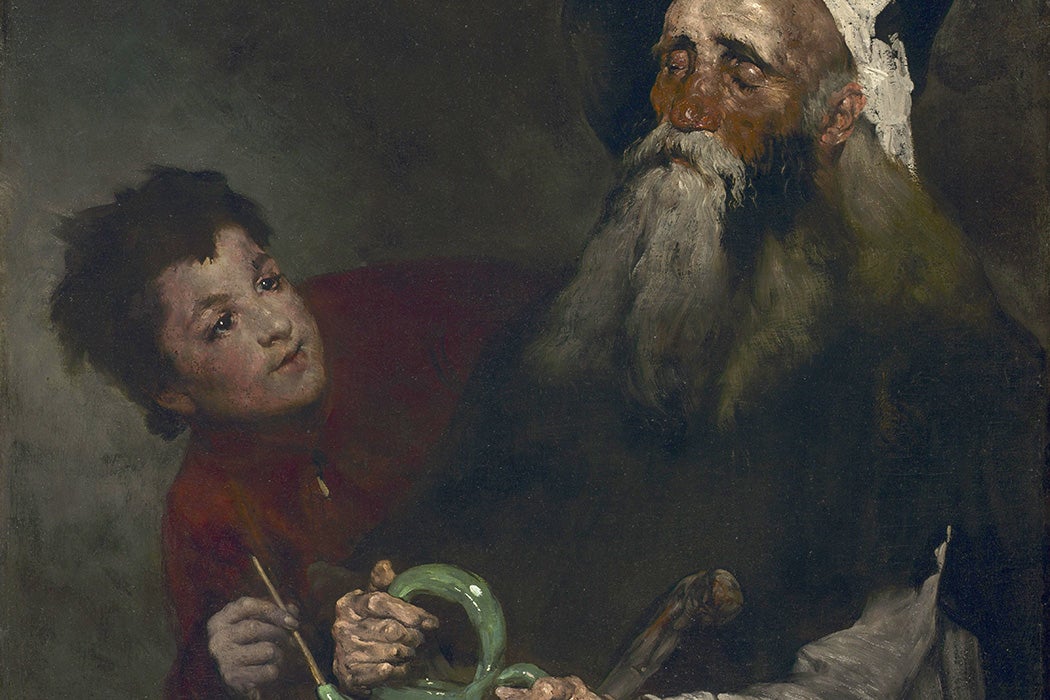Sixteenth-century Spain saw the birth of a literary genre known today as the picaresque novel. Its protagonist—the pícaro—could be described as a lowly, itinerant rogue who survives in a corrupt society by way of clever, often criminal acts. His emergence begs the question: How did the arcadian shepherd and chivalric knight-errant, until then centuries-old fixtures of European literature, give way to this witty rascal? According to literature professor Javier Herrero, the explanation resides in history. The rise of the picaresque antihero, he argues, occurred “at a time when the problems of poverty and vagrancy had captured the attention of most of the Spanish urban population.”
Throughout the early modern period, cities across Europe began to swell. The promise of economic and social development encouraged great numbers of unemployed people to migrate. Their plight radically changed the continent’s urban landscape. Suddenly, beggars and vagrants became a common sight in the streets. Extreme destitution reached a breaking point in 1540, when Charles V, the Holy Roman Emperor and King of Spain, promulgated the so-called Poor Law. This regulation, Herrero contends, sought to expel the poor from Spanish cities. “Only the pauper who had been certified as such by the priest of his parish and had received a permit from the local authorities could beg, and then only in his hometown,” he notes.
This simplistic and draconian “solution” did little to alleviate the hardships and impacts of poverty. If anything, it helped inflame an already heated debate about the role of the authorities and upper classes in cementing and perpetuating the unsettling reality of many European cities. Three thinkers in particular—Erasmus of Rotterdam, Thomas More, and Juan Luis Vives—decisively censured the “state of affairs in which men and women are deprived of their humanity and subjected to terrible suffering by a few who have created for themselves a world of gold and silver, of banquets and feasts,” Herrero writes.
Following in the footsteps of several early church fathers, but chiefly Ambrose of Milan (339-397 AD), these humanists argued that “God (and, as the instrument of his will, Nature) has given everything in common to all.” For this reason, as Herrero explains, “property belongs to the individual as long as he keeps only enough for his basic needs and distributes everything else to the poor; to keep more than is necessary is to steal what belongs to the poor. Anyone who tolerates the destitution of the beggars is responsible for their lives.”
Weekly Newsletter
This critical understanding, along with the social reality of the time, provided the necessary ingredients for the picaresque novel to arise. In its earliest inception, the genre not only gave readers a unique window into the exploits of destitute outcasts, but it also delivered an ironic critique on the “oppressive forces of contemporary society,” suggesting that the pícaro’s “sense of misery, degradation, and powerlessness” was a necessary byproduct of sixteenth-century Europe.
The anonymously published Lazarillo de Tormes (1554) is widely accepted as the first picaresque novel, and in Herrero’s words, it “mirrors this complex intellectual, moral, and social world.” Perhaps most importantly, “pity and laughter, not philosophical enlightenment, are the instruments” of its satirical attacks. Only a few decades later, Miguel de Cervantes would follow suit with the highly derisive Don Quixote. The classical and medieval models of bucolic grace and courtly honor were officially spent.







